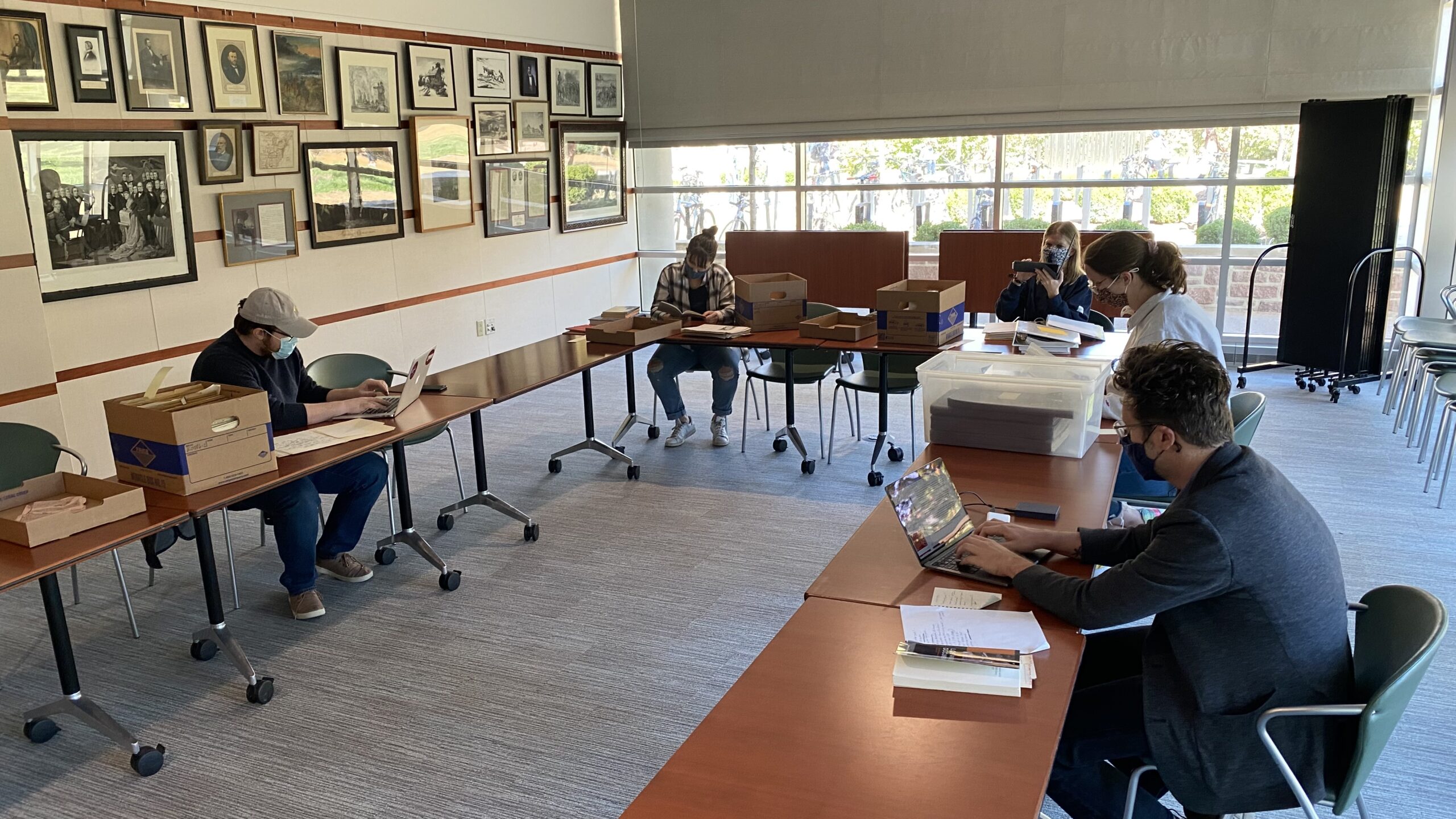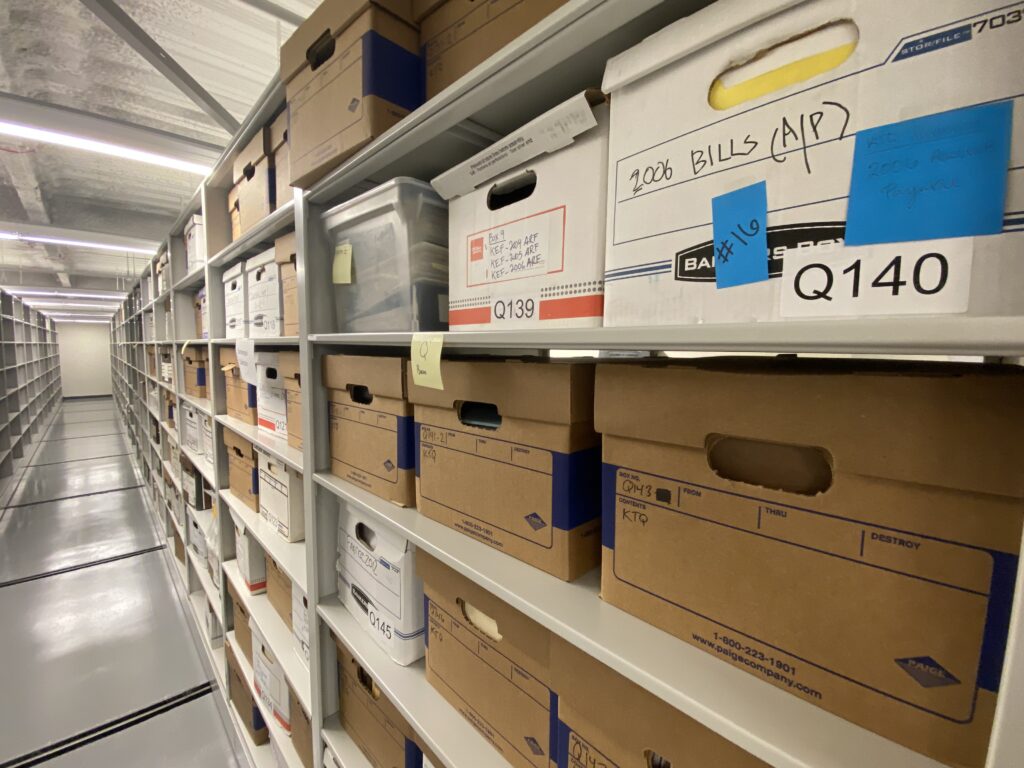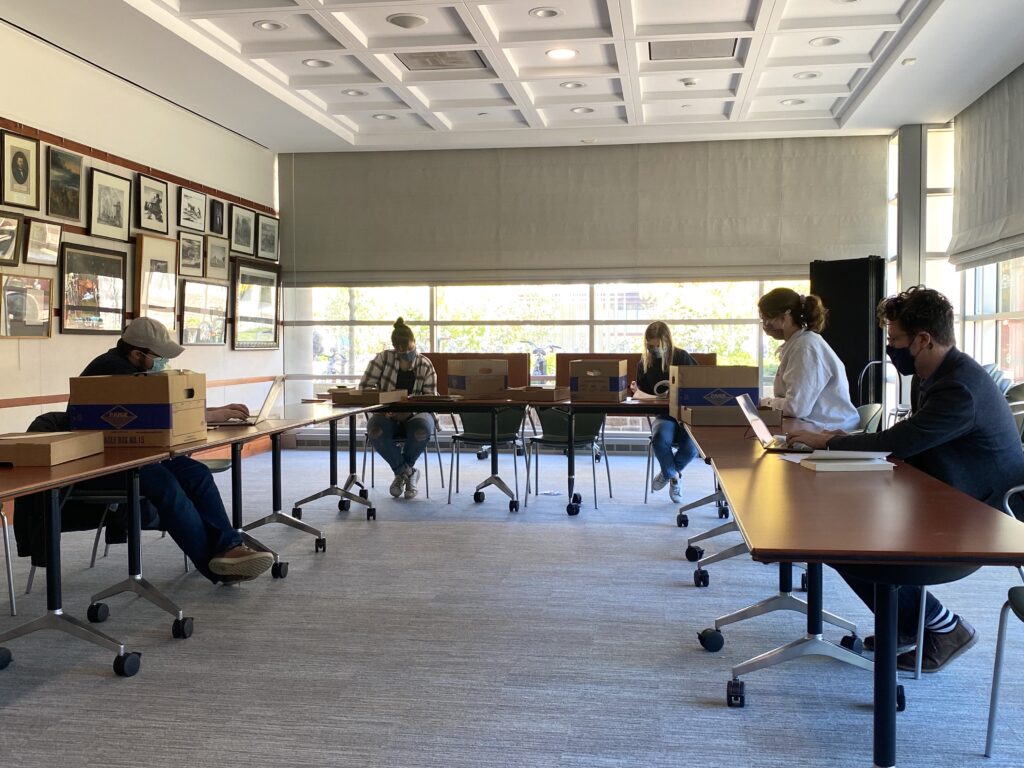
Teaching and Learning with the Kartemquin Films Collection
The Washington University Libraries acquired the collection of the esteemed documentary production company Kartemquin Films in the spring of 2021. Since then, we have been busy unpacking boxes, inventorying film reels, and checking analog videotapes for deterioration. All a part of the hard work that archivists do every day, usually outside the limelight, is to preserve collections and make them accessible to students, researchers, and the general public.
One of the most exciting things that have happened with the collection was the class that Film and Media Studies Professor John Powers taught in the fall 2021 semester. Powers centered his graduate-level film historiography class around Kartemquin’s documentary films and television series.

The long history of the documentary production company, and the wide range of subjects that they’ve produced works on, offered an excellent case study for the students to learn how to research and write film histories on a topic that they would find particularly generative.
Each week the students screened films from Kartemquin’s back catalog and paired them up with readings that offered different approaches to film history.
Following the chronological history of the output of one documentary studio provided the students continuity as they applied different theoretical frameworks to a historical understanding of the aesthetics and social impact of media texts.
In my role as the curator of film & media at Washington University Libraries, I lectured twice to the class to provide an overview of the field and history of film preservation, and on the scope of the Kartemquin collection and how it came to Washington University. Additionally, the students spent multiple class sessions in Olin Library conducting original research with the Kartemquin’s business and production papers.

As Kartemquin’s papers are not yet fully processed, the planning and execution of the class required a special level of collaboration between Powers, his students, and the Libraries staff. I surveyed the papers and found boxes relevant to the students’ research areas, which also provided a chance to better understand what was included in the large collection of over 100 boxes of manuscripts.
The students ended the semester with research papers on areas of Kartemquin’s production and documentary history that have not yet been analyzed by other scholars.
These topics include how in the 1960s the Catholic Church used documentary filmmaking to modernize its image amongst the era’s youth movement; how public broadcasting censored more radical filmmaking to cater to an imagined mainstream American audience; and how longitudinal documentary projects are forced to adjust their focus when national tragedies alter the social and political landscape.
Libraries, archives, and museums are amazing storehouses chockablock with underused collections. It takes a lot of vision and hard work from faculty and librarians to make this possible, but classes like Powers’ give students a chance to set out on academic paths that no one else has gone down yet.